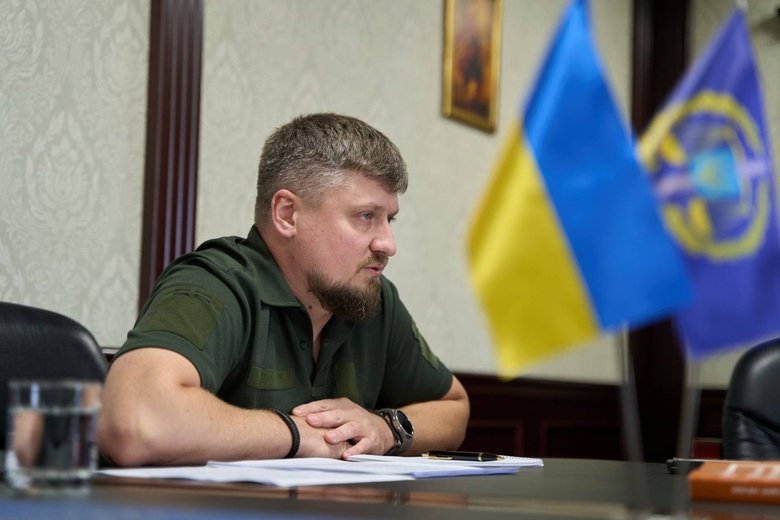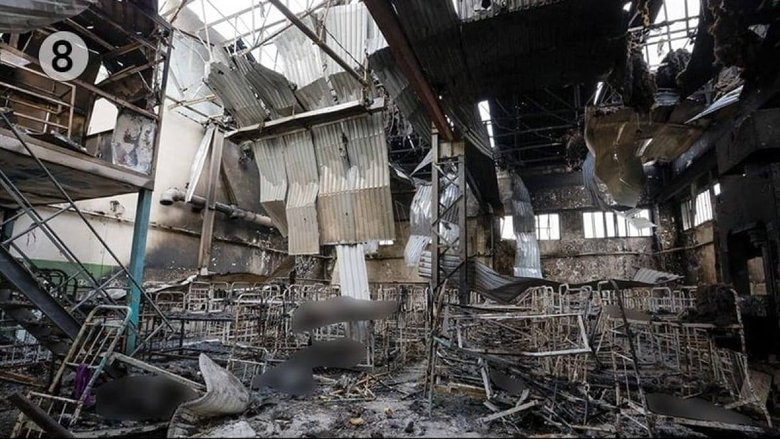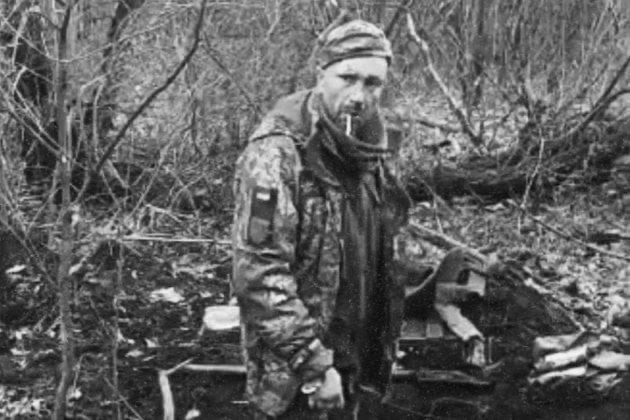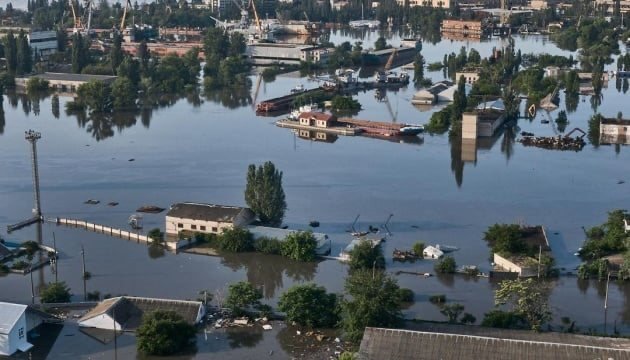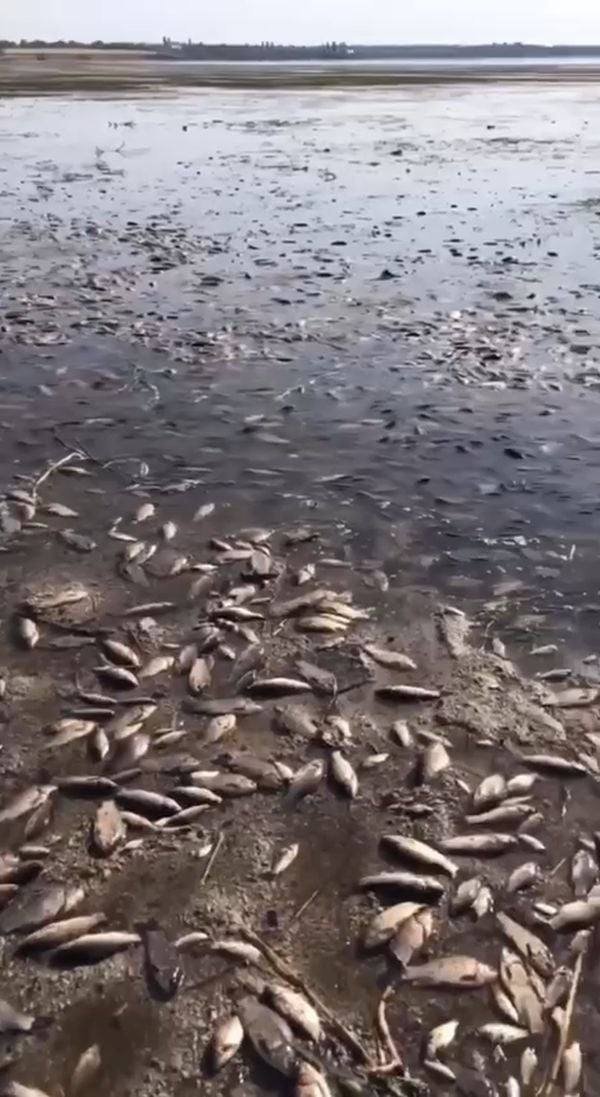Execution of soldier. Why paramedics were denied access to wounded Azov fighters in Olenivka and who shot sniper Matsiievskyi after he said "Glory to Ukraine!"
On one of the captured data storage devices that fell into the hands of law enforcement, there were roughly the following instructions for Russian soldiers: if you take military personnel prisoner and your unit is located at a considerable distance from the command post or the main forces, interrogate the prisoners and execute them.
As Deputy Prosecutor General Andrii Leshchenko notes, this was not an official document, but the storage device belonged to one of the officers. Investigators and prosecutors still have to determine how widespread such instructions are, but there have been hundreds of cases of Ukrainian fighters executed after being taken prisoner. And this is only part of the war crimes that have drawn public attention. Although such demonstrative killings are often recorded on video and posted online, investigations are complicated by the fact that it is not always possible to identify the voices of those involved, and they bear no distinguishing insignia.
In our conversation with Andrii Leshchenko about the deaths of Ukrainian prisoners of war, we began with the mass killing in Olenivka. However, in addition to such war crimes, we also discussed a number of other high-profile cases related to the war.
"MANY BODIES WERE BURNED, NO SOOT IN THE RESPIRATORY TRACTS. MANY BODIES SHOWED TRACES OF AUTOPSY"
– Are there any investigation results regarding the Olenivka terrorist attack that can already be reported to the public?
– We divide the criminal proceedings concerning the Olenivka terrorist attack into several parts. The first is the attack itself, which resulted in loss of life. The second is the denial of medical assistance to those who were wounded and injured as a result of the attack. It was established that 9 individuals survived after the Olenivka attack, but they were not provided timely medical assistance and simply bled to death.
At the same time, the prison administration, including Yevsiukhov (the deputy head - ed.), personally saw that people needed medical attention, yet neither he nor his subordinates took any action to ensure adequate medical care. As a result, those held there were not promptly taken to emergency medical facilities, nor was medical assistance provided to them on site.
– Did they call ambulances?
– The Olenivka penal colony had its own medical unit and medicines. If medics had been brought in and medicines used, the wounded Azov fighters could have been saved.
There were prisoners of war on site who tried to provide medical aid to their comrades under those conditions and asked for the necessary materials for bandaging and stopping the bleeding. But they were given nothing. They tore cloth into strips and applied makeshift bandages because there were no tourniquets, though stopping the bleeding was essential for the wounded to survive until they could be taken to a hospital.
Ambulances were called, but with a delay, and doctors were not allowed onto the colony’s premises for some time. All of this led to at least nine people dying from blood loss.
– Were they ever taken to the hospital?
– They were, but by then it was already too late.
– Regarding the attack itself: has it been established how everything happened?
– Several versions are being considered. The first is that it was an internal detonation. The second is that it was a terrorist attack carried out by the enemy using artillery to strike the barracks where the Azov fighters were held. We understand that these people were gathered in one place at a specific time, and shortly afterward, the explosion occurred.
The investigation is still ongoing. Several versions are being examined, but everything is complicated by the fact that the bodies of the dead were returned with signs of evidence having been removed. This has been the standard practice of the Russian Federation since at least 2015. For example, there have been cases where a civilian was killed by a POM-2 or POM-3 mine, and the body was returned to Ukraine without the damaging elements, showing traces of their removal. This is done to prevent establishing the cause of death or the weapon that inflicted it.
At the same time, metal fragments were found in the bodies of the deceased that did not belong to the explosive device or to weaponry in general. These may have been pieces of metal beds. But the elements that could have identified the weapon used were absent.
Many bodies were burned, with no soot in the respiratory tracts. Many bodies showed signs of autopsy.
– Why did they perform it?
– Two possibilities. It may have been their standard procedure. But we believe the autopsies were carried out to conceal traces of the crime.
– Has the investigation established on what basis they compiled the list of people transferred to that barracks?
– All the victims were Azov servicemen. These are the conscious defenders of our country who uphold the idea of Ukraine’s independence and territorial integrity. Therefore, we do not rule out that this may constitute a war crime, and possibly even an element of genocide, since it was precisely these servicemen who were killed.
During the Olenivka attack, at least 50 people were killed and around 136 Azov servicemen sustained injuries of varying degrees of severity. Most likely, this reflects a certain policy of the Russian Federation.
– What do you mean?
– Prisoners of war are under the authority of the detaining country. And that country had provided guarantees of proper treatment and conditions of detention when they surrendered at Azovstal. It guaranteed that their rights would be respected, that they would be treated appropriately and held in humane conditions, and that their lives and health would be safeguarded. Knowing such guarantees were in place, this method may have been deliberately chosen to accuse Ukraine of allegedly carrying out the strike itself.
– When can the investigation into the Olenivka terrorist attack be completed?
– We hope that the results of the forensic examination, which was ordered to identify the means of attack, will allow us to establish the specific method and mechanism of this crime. The examination is quite complicated, as the bodies of the defenders were returned in horrific condition. Even taking swabs from these bodies proved very difficult. In one case, it was impossible to collect DNA samples because the destructive thermal effect of high temperatures had decomposed the proteins, making it impossible to identify the body.
Swabs were taken, and the corresponding forensic examination is now underway. Once it is completed, we will be able to speak more concretely about the timeline.
We fully understand the strong demand for justice from the relatives of the victims and from society as a whole. A tremendous amount of work has already been carried out. We remain in constant communication with the relatives of the victims, informing them of the results of our investigation so that they do not think the prosecution or investigative authorities are inactive. Work on this case is ongoing.
– The video showing unarmed Ukrainian soldier Oleksandr Matsiievskyi being executed by Russian occupiers for saying "Glory to Ukraine!" once spread across the globe. Sadly, there have already been numerous videos of our soldiers being executed, and as Prosecutor Yurii Bilousov told Censor.NET in an interview, they are under investigation. What are the results of the investigation into the murder of Oleksandr Matsiievskyi? Has it been established who killed him?
– Unfortunately, not yet. For us, it is a matter of principle to bring the investigation to its logical conclusion and identify them. Both operational units, working with full dedication, and investigators and prosecutors are engaged in this effort.
Do you recall that video? It does not show the chevrons, emblems, or insignia of those who committed the crime or were present. Only their voices can be heard.
We are now working to identify these individuals. Given the enormous volumes of intercepted communications, we are looking for technical, forensic, any possible means to develop a tool that could compare the voices recorded in the Matsiievskyi execution video with the voices of Russian servicemen collected in criminal proceedings across Ukraine.
Doing this manually or solely through forensic methods, meaning assigning thousands of phonoscopic examinations, is practically impossible. It would require enormous time, a wide pool of experts, and these examinations are currently in very high demand among law enforcement agencies. Therefore, we are seeking a technical solution that would filter out from the mass of intercepted recordings those not belonging to these individuals. The goal is to isolate at least 10–20 audio files where the voices resemble those heard in the Matsiyevskyi execution footage. After that, we will assign the appropriate phonoscopic examinations to obtain evidence in the manner prescribed by the Criminal Procedure Code.
This execution was one of the first such cases, and at that time, it seemed unimaginable that a human being was capable of such atrocities. But at this stage of the war, there are hundreds of such cases.
– This hardly appears to be a perpetrator’s excess.
– We see that this is, in fact, policy at the level of the military command. There was a case where a captured storage device was found among the trophy documents. It contained an unofficial compilation of rules of conduct for servicemen. This is not an official publication of the Armed Forces or the Ministry of Defense of the Russian Federation. Yet it appears the flash drive belonged to an officer of the Russian army who could have used these rules to train personnel and to understand principles of command and control. Among the materials was a section on the treatment of prisoners of war. It contained roughly the following instructions: if you take soldiers prisoner and your group is located at a considerable distance from the command post or from the main forces, interrogate the prisoners and execute them. The more we investigate, the more evidence we find that this is a systemic policy.
In addition, consider the public interviews given by certain individuals, representatives of the enemy’s army, who say prisoners should not be taken and should be eliminated.
Also, look at events involving the Russian army in other armed conflicts, where they likewise executed captured prisoners.
In Ukraine, this phenomenon is, sadly, becoming more and more widespread.
– Lately, more servicemen have been returned in prisoner exchanges. But there are also some civilians. Is it true that the Russians are returning people who were convicted in Russia of ordinary criminal offenses they actually committed?
– It is true: within the framework of exchanges, a certain share of people convicted in Russia of ordinary criminal offenses are being returned to Ukraine. For example, an exchange took place today, and among those swapped there were such individuals.
There have been other similar instances. For example, during exchanges Russia has returned people whom its law-enforcement agencies had detained for acts such as the distribution of narcotic drugs. They had been convicted and were serving sentences there. We cannot refuse to take back our citizens.
The next step, however, is to examine whether the crime for which a person was convicted actually took place. It is possible that some crimes were committed, but we also know of cases where people were simply "pulled" into Russian territory. For instance, former participants of the Anti-Terrorist Operation (ATO), with the relevant documents, were allegedly offered construction jobs in Russia. Hrytsak spoke about this at a briefing. They were given phones and told to go to crowded places in Moscow, making phone calls in which they would say something like they had received certain items. It is not excluded that this was done to accuse us of allegedly preparing terrorist acts.
"WE APPLY METHODS OF INVESTIGATIVE ACTIONS TO MINIMIZE THE RISK OF RE-TRAUMATIZING VICTIMS AND WITNESSES"
– Let’s talk about the destruction of the Kakhovka Hydroelectric Power Plant. Can you share the results of the investigation?
–The investigation has established which military units of the Russian Federation were involved in committing this crime and the mechanism of its execution. It was determined that an internal explosion was carried out using explosives that had been prepared and planted in advance.
The Kakhovka dam could have withstood the impact of a large quantity of explosives, since it was designed to be very difficult to destroy through external strikes. That is why the explosives were placed inside in order to cause maximum destruction, breach the dam, and release a massive volume of water.
– Which units were these?
– I cannot tell you that yet. But I can say that the commander of the Dnepr troop grouping has been served a notice of suspicion for committing this crime. Once we complete our investigative actions, we will report to the public which unit specifically was involved in committing this crime and which servicemen from that unit participated.
At this stage, we are still in the process of collecting and analyzing evidence. And in order not to jeopardize the ability to gather this evidence, I cannot disclose further details for now.
– What is the amount of damage? Has it already been determined?
– Not definitively. This process will still take some time. The consequences of the dam’s destruction are evident on both the Left Bank and the Right Bank, as well as in the Black Sea, where a massive amount of fresh water flowed, potentially killing flora and fauna. In addition, we see that dangerous facilities such as gas stations, cemeteries, and cattle burial sites were flooded. Contamination with heavy metals occurred. For example, as a result of detecting harmful substances, heavy metals, on the dried bed of the Dnipro River in the city of Zaporizhzhia, biological hair samples were taken from one hundred children living in adjacent areas to determine the possible negative impact on human health. These samples were sent for analysis to an Italian laboratory as part of a court-ordered forensic examination. The study has been completed, and we are awaiting the results.
This is therefore an enormous body of work. A large number of National Police investigators are involved in this case, interviewing victims and documenting the consequences suffered: whether property was lost, whether relatives were killed, or whether anyone was injured.
All of this is being recorded within a single criminal proceeding. And to establish the total amount of damages, we must document all such episodes, at least within the territory controlled by Ukraine. A forensic examination has already been commissioned, but experts need to be provided with the necessary materials and documents. Therefore, at this time, we cannot state the exact amount of damage caused, whether to an individual, to the state, or to legal entities.
To assess the seriousness, scale, and long-term consequences of this crime for the environment, the prosecutor appointed a comprehensive forensic commission, including engineering, ecological, and life-sustenance expertise. For this purpose, at the request of the experts, 24 specialists in natural sciences were granted access to the case materials.
In addition to investigators and prosecutors, several non-governmental organizations are gathering information on the consequences. For instance, according to the report "Flooded by War. A Study of the Destruction of the Kakhovka HPP and Its Consequences for the Ecosystem, Agriculture, Civilian Life, and International Justice" prepared by the NGO Truth Hounds and Project Expedite Justice, among other environmental impacts is the decline in the level and quality of groundwater. Should the dam be restored, it would take 33 years to return to its previous state.
– How many criminal proceedings regarding the crime of ecocide committed during the full-scale war are currently under investigation?
– Eleven criminal proceedings are being investigated on the grounds of ecocide.
– Why so few, considering the scale of destruction?
– Sooner or later, we will face the need to examine the overall consequences of the armed conflict, specifically, how it has affected our ecosystem. For example, every shell explosion on the ground contaminates the soil with both chemical substances and metals contained in the particular munition. At this stage, it is not practical to register criminal proceedings under the article on "Ecocide" for every single shelling of territory.
But we understand that, in the future, comprehensive research will be required into the results of soil and water contamination, the disruption of the normal functioning of our nature reserves, recreational areas, and protected sites, as well as the damage inflicted on the natural reserve fund. This may also become part of broader research into the material consequences of the war, when we will be able to state how much funding will be required to restore our resources to their pre-war state. In turn, this could later become a subject of discussion regarding the amount of compensation for the damage caused by armed aggression.
It should also be remembered that in the occupied territories, coal mines continue to operate, as well as plants producing pig iron and steel. All of this contributes to the pollution of water, soil, and air. The State of Ukraine and the Ukrainian people, who are the rightful owners of these mineral resources, have no access to them. On the contrary, they are being extracted by the aggressor state and used not to meet the needs of the occupation administration, but to fill the budget of the Russian Federation. This, too, may constitute an element of the damage caused, including to the ecological system.
As for coal extraction, in the course of one of the criminal proceedings, we discovered that the scale is colossal. Enormous volumes of coal have been extracted by the Russian Federation on our territory. Part of it was used to cover Russia’s domestic needs, but in most cases, documents were falsified regarding the origin of this coal, and it was sold on.
At this stage, we are working to identify all legal entities and individuals involved. Notices of suspicion have already been served on several persons, including representatives of the Administration of the President of the Russian Federation, over these facts treated as the commission of war crimes.
– Are rare earth metals being extracted as well?
– I cannot comment on that, as we have not received such information in the course of this proceeding. But that does not mean it is not happening. If we obtain relevant information or evidence that rare earth metals are being extracted in the occupied territories, we will investigate it. If anyone is ready to share such information, we are prepared to work in that direction and examine these issues within the criminal proceeding.
– On the night of August 6 this year, the Russians struck a gas transmission system facility that provides a diversified route for natural gas supplies to Ukraine. Has a case been opened on this fact? And more generally, what is the specific nature of investigating criminal proceedings related to strikes on critical infrastructure?
– Yes, under Article 438 of the Criminal Code of Ukraine (Violation of the Laws and Customs of War). Proceedings are opened for each instance of shelling. The task is, at a minimum, to record the incident itself and then the consequences that the incident was intended to cause or did cause.
We also know that, for attacks on Ukraine’s energy infrastructure, the International Criminal Court has issued arrest warrants for a number of individuals, representatives of the authorities of the Russian Federation, including servicemen. Why is this important? Because such attacks may be more than just elements of war crimes. Had the winter of 2022–2023 been colder, what consequences could this have led to? One line of inquiry in the criminal case is that this was done to force as many people as possible to leave Ukraine, which would have a ripple effect on the country’s economy. We lose people who can work and increase GDP, we incur economic losses, budget revenues decline. And we must allocate funds to rebuild what the enemy has destroyed. Therefore, these strikes are considered not as isolated episodes of war crimes, but as the Russian Federation’s systemic policy regarding the method of waging war.
The Geneva Conventions prohibit the use of terror as a method of warfare. And these relentless attacks that the Russians have carried out against energy facilities since 2022 are direct terror against the civilian population, by which Russia pursues its military aims. We therefore consider this a prohibited method of warfare and not a thousand separate crimes, but one single continuing crime. We also discern elements indicative of genocide, since the creation of conditions in which normal life is impossible forces people to leave the territory of Ukraine.
– Has it been possible to identify those responsible for such strikes?
– Yes, it has. But let’s be frank: given that the International Criminal Court has already decided to evaluate the actions of these individuals, we are not prosecuting them at the national level. The ICC has already done so by classifying these acts as war crimes, assessing the actions of specific individuals, and issuing arrest warrants.
It is important to understand who or what the weapons are directed against. If we are talking about means of attack capable of carrying nuclear warheads, such as Kh-101 missiles, Kalibrs or Kinzhal missiles, these are weapons under the authority of the Supreme Commander-in-Chief of the Armed Forces of the Russian Federation, Putin. In general theory, authorization for their use is granted by Putin.
Yes, many individuals are involved in this chain of decision-making. That is why a notice of suspicion has already been served on the commander of the MiG-31K aviation regiment, which operates as carriers of Kalibr missiles. This regiment alone has such aircraft in service. A notice of suspicion has also been served on the command of heavy aviation, which deploys strategic bombers to carry out similar strikes.
But at the level of the highest political and military leadership, this falls under the jurisdiction of the International Criminal Court.
We can also issue notices of suspicion, but if our partners from other countries or the International Criminal Court itself wish to evaluate these actions independently, our priority is for international institutions to provide such assessments. That is why the Office of the ICC Prosecutor, in cooperation with us, having analyzed, among other things, the materials of our criminal proceedings, obtained the necessary evidence, and conducted its own investigation, initiated the issuance of arrest warrants.
– Recently, the Office of the Prosecutor General held a meeting with representatives of diplomatic missions, international organizations, and international technical assistance projects working in Ukraine in the field of international justice. The statement following the meeting said that the system of protection for victims and witnesses would be strengthened. Can you elaborate on this?
– Two areas can be highlighted here. The first involves new approaches in working with this category of victims and witnesses. We apply methods of conducting investigative actions aimed at minimizing the risk of re-traumatization.
With the help of our donors and partners, we equipped special rooms for conducting investigative interviews in line with European standards. To secure the property in these rooms, bars were installed on the windows. When a victim entered one such room and saw the bars, he experienced flashbacks, recalling his time in a place of detention. Although the room was bright and newly renovated, with office furniture, that single image the victim focused on triggered painful memories. Therefore, with our partners’ assistance, we trained a number of investigators and prosecutors to work with this category of victims so as to avoid re-traumatizing them. This is a complex process that takes more time, but it pays off: after an interview, the victim or witness remains willing to continue cooperating with investigators or prosecutors. They understand why they are doing this, the overall purpose of the criminal proceedings, and why their testimony matters, including for those who are still being held in places of detention.
A second line of effort is the systematic work of the Coordination Center for Work with Witnesses and Victims at the Office of the Prosecutor General. The priority is people returned from captivity, as well as children, who are also victims of war crimes.
The Center’s task is to ensure that the needs of witnesses and victims are met. This includes psychological and psychiatric assistance, preparing them for interviews, and explaining how much time and how many procedures are required and why those procedures are carried out. Work is also conducted with the parents of children, since they likewise experience emotional distress and may feel personally at fault.
In certain cases, we recognize that we may not obtain the necessary results for criminal prosecution because we may fail to explain adequately why a victim needs to give testimony. If we see that a person is not ready to testify at this stage, it is better to postpone this investigative action. We will return to the person in a month, after they complete a course of rehabilitation, or later, waiting until their basic needs are met. There are cases where a person has nowhere to live, lacks identity documents, or needs some form of humanitarian or medical assistance. The staff of this Center is specifically focused on finding mechanisms that will help meet that person’s needs.
Tetiana Bodnia, Censor.NET

